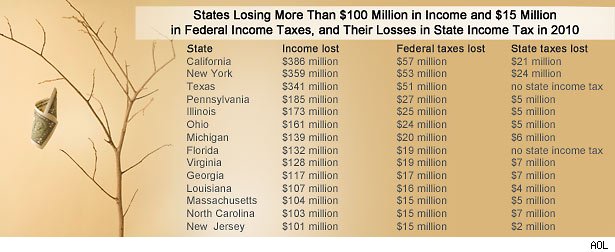
In her more than two decades as a wealth management adviser, Ellen Miley Perry has seen the differences between wealthy families who flounder and those who find the time to develop emotionally and financially healthy connections and to raise financially savvy independent adults.”Family relationships are the most intense set of relationships anyone experiences,” says Perry, the author of “A Wealth of Possibilities: Navigating Family, Money, and Legacy.” “We’re more reactive to each other, which makes things more complicated.”While it’s tempting to blame family issues on money — or the lack or abundance of it — Perry has found that money simply magnifies personal and relationship dynamics that are already present.”Wealth just takes your experiences and makes them larger,” she says. “For example, if you tend to be a nervous person you may be paranoid if you become wealthy. If you’re a kind person, as a wealthy individual you’ll be kinder.”Raising a Financially Savvy College Grad Starts EarlyPerry’s advice on helping families flourish financially and emotionally applies to all, regardless of their level of financial achievement. Here are a few of her tips for raising financially responsible young adults.1. Do some pre-college financial prep. “Wealthy families sometimes have trouble raising financially smart kids because those kids have had everything handed to them,” says Perry. “I’m a big believer in kids having summer jobs and handling their own money. There’s nothing like day-to-day lessons to teach you money management.” Regardless of the family’s means, Perry says, an allowance can be an excellent tool to teach kids about money, as long as the parents don’t bail the kids out if they run into hardship.”Don’t tie the allowance to chores, either,” she says. “Chores should be done just because that’s part of being a family. Even if the family can afford to have help, kids should do their own laundry and have other real-life experience before they go to college.”When kids finally graduate college, parents need to establish guidelines as to what help they’ll give and for how long. Many post-college students struggle to find a job that pays enough to cover their rent and student loan payments, but, says Perry, “if you don’t experience hardship, you don’t learn.”2. Cultivate connectivity. It can be tough to reconnect with post-college offspring, but it’s easier if you have a strong connection from early childhood.”There have been multiple studies done that show that no matter what your economic background is, the most important variable that will indicate how successful a child will be as an adult is how connected that child feels at home and at school,” Perry says. “You need to develop strong communication skills, learn to listen and to see your children as they are rather than correcting their thinking.”The most successful parents are those who are “intentional” parents, focused on setting an example for their children. “If you want your kids to be compassionate people and good listeners, then you need to demonstrate those skills with them,” says Perry.As your adult children begin to make their way in the world, it’s time to give them the space to make their own decisions while staying emotionally available to listen to them and to give advice when asked.3. Let your older kids solve their own problems. Money issues notwithstanding, a common trait among loving parents is to help their kids manage every problem they encounter.”One woman I know got a call from her 26-year-old daughter who was stranded after her flight was canceled,” Perry says. “The mother told the daughter to wait for a few minutes, then called her back with a rebooked flight. The better response would have been to talk through the problem with the daughter, to generate ideas rather than to solve the problem.”Perry says solving problems for your kids, whether financial or emotional, sends the silent message that the kids can’t solve the problem themselves.The goal is to instill the opposite attitude in your children — the skills and confidence to face financial roadblocks on their own.Financial independence isn’t just good for your kids as they reach adulthood, it’s good for you. Not only will you have the emotional satisfaction of having raised a responsible adult, but you won’t be shortchanging your own financial needs for retirement savings and other investments every time you bail out your 20-something “kid.”

 The College on a Dime series is written by Zac Bissonnette, a junior at the University of Massachusetts, Amherst. His book College On a Dime will be published by Penguin in the fall.In a press release issued this morning, Sallie Mae suggests that students use private student loans provided by Sallie Mae — and then make the interest payments while in college to “save a lot later.”According to the press release, “As families make college admission and financial aid decisions for next school year, Sallie Mae recommends building interest payments on student loans into the budget. Keeping up with accruing interest prevents loan balances from growing each month beyond the original balance. After graduation, when it’s time to pay down the principal, young professionals start out their careers with smaller IOUs. That means they can pay off their debt faster than their fellow alums who deferred their interest.”Here’s the problem: instead of making interest payments on a student loan while you’re in college, why don’t you just borrow less money and send the cash to the school?Sallie Mae’s rationale here is laughably self-serving: It suggests that you should, as the student in its example did, work at the dining hall during college to make interest payments on a loan, without doing anything to pay down the principal.Why the heck would anyone do that? Let’s use some hypothetical numbers here, just for fun (simplified to make this easier to follow. I crunched these numbers a few different ways and couldn’t figure out a way where it ever makes sense to borrow more money than you need to to make interest payments):You borrow $50,000 to pay for college at an interest rate of 10%, which means you’ll have to pay $5,000 per year in interest just to keep the balance from growing. You work at the dining hall for four years, earning $5,000 per year, and put a total of $20,000 toward the interest payments on the loan. Your loan balance at graduation? $50,000.You were going to borrow $50,000 to pay for college but instead, you borrow just $30,000 because you’re going to earn $5,000 per year working at the dining hall. You don’t make any interest payments on the debt while you’re in school because you’re using the money to pay for school. Over four years, that $30,000 debt load grows to $43,923.Bottom line? It never makes sense to borrow more money than you need so that you can pay the interest while you’re in college. It makes great sense for the student loan company — you’re sending them $5,000 per year without reducing your principal — but it’s a terrible option for the consumer. Instead of making interest payments, make principal payments by not borrowing at all or by borrowing less money. If you don’t have the cash available immediately, most colleges offer monthly payment plans that allow you to spread out expenses over the course of the semester without paying any interest charges.Instead of just avoiding interest charges for a few years, you’ll avoid paying interest for the entire life of the loan. Now that’s a much smarter option than Sallie Mae which is always, for students looking for ways to finance college, a Stupid Option.
The College on a Dime series is written by Zac Bissonnette, a junior at the University of Massachusetts, Amherst. His book College On a Dime will be published by Penguin in the fall.In a press release issued this morning, Sallie Mae suggests that students use private student loans provided by Sallie Mae — and then make the interest payments while in college to “save a lot later.”According to the press release, “As families make college admission and financial aid decisions for next school year, Sallie Mae recommends building interest payments on student loans into the budget. Keeping up with accruing interest prevents loan balances from growing each month beyond the original balance. After graduation, when it’s time to pay down the principal, young professionals start out their careers with smaller IOUs. That means they can pay off their debt faster than their fellow alums who deferred their interest.”Here’s the problem: instead of making interest payments on a student loan while you’re in college, why don’t you just borrow less money and send the cash to the school?Sallie Mae’s rationale here is laughably self-serving: It suggests that you should, as the student in its example did, work at the dining hall during college to make interest payments on a loan, without doing anything to pay down the principal.Why the heck would anyone do that? Let’s use some hypothetical numbers here, just for fun (simplified to make this easier to follow. I crunched these numbers a few different ways and couldn’t figure out a way where it ever makes sense to borrow more money than you need to to make interest payments):You borrow $50,000 to pay for college at an interest rate of 10%, which means you’ll have to pay $5,000 per year in interest just to keep the balance from growing. You work at the dining hall for four years, earning $5,000 per year, and put a total of $20,000 toward the interest payments on the loan. Your loan balance at graduation? $50,000.You were going to borrow $50,000 to pay for college but instead, you borrow just $30,000 because you’re going to earn $5,000 per year working at the dining hall. You don’t make any interest payments on the debt while you’re in school because you’re using the money to pay for school. Over four years, that $30,000 debt load grows to $43,923.Bottom line? It never makes sense to borrow more money than you need so that you can pay the interest while you’re in college. It makes great sense for the student loan company — you’re sending them $5,000 per year without reducing your principal — but it’s a terrible option for the consumer. Instead of making interest payments, make principal payments by not borrowing at all or by borrowing less money. If you don’t have the cash available immediately, most colleges offer monthly payment plans that allow you to spread out expenses over the course of the semester without paying any interest charges.Instead of just avoiding interest charges for a few years, you’ll avoid paying interest for the entire life of the loan. Now that’s a much smarter option than Sallie Mae which is always, for students looking for ways to finance college, a Stupid Option. When students drop out of college, it’s not just disappointing for them and their parents — it’s also bad news for Uncle Sam, and even for their next-door neighbors.A new study from the American Institutes for Research examined the outcomes for more than 1.1 million full-time students who entered college in 2002 with the best intentions of getting a bachelor’s degree. AIR says nearly 500,000 did not graduate within six years. The quitting spurt is expensive: AIR says those dropouts cost the nation $4.5 billion in lost income, and lost federal and state income taxes.At a time when the fed and state governments are hungry for revenues, those losses are felt keenly.”These findings represent just one year and one graduating class. Therefore, the overall costs of low graduation rates are much higher since these losses accumulate year after year,” explained Mark Schneider, a vice president at the nonprofit institution, who co-authored the report, The High Cost of Low Graduation Rates: How Much Does Dropping Out of College Really Cost? with Lu (Michelle) Yin. “This is just the tip of the iceberg. While this report focuses on only one cohort of students, losses of this magnitude are incurred annually by each and every graduating class,” he said in a prepared statement.Students who walk away before they get to strut to Pomp and Circumstance are not only left with the emotional baggage of not completing college, but also with the heavy burden of student loan debt, and the investment of their own money in tuition that won’t generate any returns. And of course, by leaving school without a sheepskin, they are curtailing their ability to get the great jobs they desire.According to the Census Bureau, college graduates between the ages of 25 and 34, working year-round, earn about 40% more than those with some college who have not completed their degrees, and around two-thirds more than those with just high school diplomas. The lifetime earnings of a college graduate can exceed those of a high school graduate by as much as $500,000, reports AIR.
When students drop out of college, it’s not just disappointing for them and their parents — it’s also bad news for Uncle Sam, and even for their next-door neighbors.A new study from the American Institutes for Research examined the outcomes for more than 1.1 million full-time students who entered college in 2002 with the best intentions of getting a bachelor’s degree. AIR says nearly 500,000 did not graduate within six years. The quitting spurt is expensive: AIR says those dropouts cost the nation $4.5 billion in lost income, and lost federal and state income taxes.At a time when the fed and state governments are hungry for revenues, those losses are felt keenly.”These findings represent just one year and one graduating class. Therefore, the overall costs of low graduation rates are much higher since these losses accumulate year after year,” explained Mark Schneider, a vice president at the nonprofit institution, who co-authored the report, The High Cost of Low Graduation Rates: How Much Does Dropping Out of College Really Cost? with Lu (Michelle) Yin. “This is just the tip of the iceberg. While this report focuses on only one cohort of students, losses of this magnitude are incurred annually by each and every graduating class,” he said in a prepared statement.Students who walk away before they get to strut to Pomp and Circumstance are not only left with the emotional baggage of not completing college, but also with the heavy burden of student loan debt, and the investment of their own money in tuition that won’t generate any returns. And of course, by leaving school without a sheepskin, they are curtailing their ability to get the great jobs they desire.According to the Census Bureau, college graduates between the ages of 25 and 34, working year-round, earn about 40% more than those with some college who have not completed their degrees, and around two-thirds more than those with just high school diplomas. The lifetime earnings of a college graduate can exceed those of a high school graduate by as much as $500,000, reports AIR. Why Your Neighbors Care If You Drop OutA large number of students leaving college before graduating is a lose-lose proposition for the entire society. “Taxpayers have paid billions of dollars in subsidies to support these students as they pursue degrees they will never earn, and as a nation, we incur billions in lost earnings and lost income taxes each year,” said Schneider.The lost revenue and economic energy lost due to dropouts from colleges and universities affects some states significantly more than others, according to AIR.In 14 states, the income losses from the single group of dropouts examined exceeded $100 million annually, reports AIR. California topped the list with $386 million in lost income, followed closely by New York with around $360 million. Louisiana, Massachusetts, North Carolina and New Jersey all lost between $100 million and $107 million in earnings.
Why Your Neighbors Care If You Drop OutA large number of students leaving college before graduating is a lose-lose proposition for the entire society. “Taxpayers have paid billions of dollars in subsidies to support these students as they pursue degrees they will never earn, and as a nation, we incur billions in lost earnings and lost income taxes each year,” said Schneider.The lost revenue and economic energy lost due to dropouts from colleges and universities affects some states significantly more than others, according to AIR.In 14 states, the income losses from the single group of dropouts examined exceeded $100 million annually, reports AIR. California topped the list with $386 million in lost income, followed closely by New York with around $360 million. Louisiana, Massachusetts, North Carolina and New Jersey all lost between $100 million and $107 million in earnings. “Federal income tax losses parallel these numbers: with losses in federal income taxes exceeding $50 million per year in California, New York and Texas and more than $15 million in losses from Massachusetts, North Carolina, and New Jersey,” writes the AIR.The bottom line: With AIR estimating that 40% of this year’s incoming college freshmen will fail to earn their degrees within six years, somebody should be studying up on how to boost students’ odds of success, and how to restore the U.S. to the glory days when it had the world’s highest concentration of college and university degrees.
“Federal income tax losses parallel these numbers: with losses in federal income taxes exceeding $50 million per year in California, New York and Texas and more than $15 million in losses from Massachusetts, North Carolina, and New Jersey,” writes the AIR.The bottom line: With AIR estimating that 40% of this year’s incoming college freshmen will fail to earn their degrees within six years, somebody should be studying up on how to boost students’ odds of success, and how to restore the U.S. to the glory days when it had the world’s highest concentration of college and university degrees. Puzzles are often fun, but not this one: With credit scores plunging and loans in short supply, how do you go about paying for college these days?It’s a question you’d think might almost be easy for Scott Gamm. Granted, in many ways, he’s just another high school kid, about to turn 18 and headed to college this fall (New York University’s Stern School of Business). But in many ways, he isn’t a typical high school kid: He’s the founder of HelpSaveMyDollars.com, a personal finance website that he began in July, 2009.”I’ve had an interest in finance since age 12,” says Gamm, “and after my family experienced some financial problems, I realized how important it is to learn about money at a young age. Personal finance isn’t taught in schools very much, and I felt I needed to provide this critical information in an easy-to-understand manner.”But even Gamm and his parents don’t have a magic answer to that “how to pay for college” question and are scrambling to shore up loans to pay his tuition, which will be north of $50,000 per year.In a perfect world, students would have a big, fat 529 to rely on, but it’s not a perfect world. And even 529s have taken a hit these days. So what are people doing to fund a higher education? Here are three avenues to consider taking:The smaller banks and community banks are where the action’s been lately.By all means, check out the loans and offerings at the bigger banks — the last thing you want to do is ignore any possible source of revenue to pay for college. But community banks are jumping into the fray more often these days, and while you don’t want to ignore the big banks, you sure don’t want to drive past that little community bank in your neighborhood and assume it has nothing to offer.Jennifer Sassman, director of financial aid at Wartburg College in Waverly, Iowa, has noticed that community banks generally have kinder terms than the bigger institutions. “It’s becoming more widespread that the loans offered by larger banks are requiring interest payments while the student is still in school,” Sassman observes. “Although this does help drive down the cost of the loan, it’s not always a feasible option for students.”Another plus with going to a community bank is that many students can get a loan without being required to have a co-signer. With big banks, you’ll almost definitely have to have a more well-heeled adult signing on the dotted line, too.Not all the loan news coming out of community banks is good news, though. As Gamm explains, “These loans [from smaller institutions] are generally private loans with high interest rates that can be raised at any time, oftentimes without any notice.”Another negative, according to both Sassman and Gamm? Community banks often can’t lend as much as the bigger banks.Don’t forget grants and scholarships. “I’ve been having success using websites such as FastWeb.com and Cappex.com for scholarships and grants, which are hard to get,” says Gamm, “but they’re a much better option than student loans, since grants don’t have to be paid back, and there are no interest rates to worry about.”And a Sallie Mae study backs up Gamm’s reasoning. Last year, Gallup conducted a survey for Sallie Mae called “How America Pays for College 2009,” which was just released. They found that the number of American families nabbing grants and scholarships was greater than the number of students going after federal and private education loans.Peer-to-peer student loan lending. If you read a lot of personal finance articles, you’ve probably heard about Prosper and some of the other lending sites that offer a way for you to get a loan from a peer. Regular investors can invest in someone else’s goal of homeownership or business startup. People Capital takes that idea and makes it all about lending to students who want to go to college. If that concept appeals to you, it’s worth checking out. Geoff Williams is a frequent contributor to WalletPop. He is also the co-author of the new book Living Well with Bad Credit.
Puzzles are often fun, but not this one: With credit scores plunging and loans in short supply, how do you go about paying for college these days?It’s a question you’d think might almost be easy for Scott Gamm. Granted, in many ways, he’s just another high school kid, about to turn 18 and headed to college this fall (New York University’s Stern School of Business). But in many ways, he isn’t a typical high school kid: He’s the founder of HelpSaveMyDollars.com, a personal finance website that he began in July, 2009.”I’ve had an interest in finance since age 12,” says Gamm, “and after my family experienced some financial problems, I realized how important it is to learn about money at a young age. Personal finance isn’t taught in schools very much, and I felt I needed to provide this critical information in an easy-to-understand manner.”But even Gamm and his parents don’t have a magic answer to that “how to pay for college” question and are scrambling to shore up loans to pay his tuition, which will be north of $50,000 per year.In a perfect world, students would have a big, fat 529 to rely on, but it’s not a perfect world. And even 529s have taken a hit these days. So what are people doing to fund a higher education? Here are three avenues to consider taking:The smaller banks and community banks are where the action’s been lately.By all means, check out the loans and offerings at the bigger banks — the last thing you want to do is ignore any possible source of revenue to pay for college. But community banks are jumping into the fray more often these days, and while you don’t want to ignore the big banks, you sure don’t want to drive past that little community bank in your neighborhood and assume it has nothing to offer.Jennifer Sassman, director of financial aid at Wartburg College in Waverly, Iowa, has noticed that community banks generally have kinder terms than the bigger institutions. “It’s becoming more widespread that the loans offered by larger banks are requiring interest payments while the student is still in school,” Sassman observes. “Although this does help drive down the cost of the loan, it’s not always a feasible option for students.”Another plus with going to a community bank is that many students can get a loan without being required to have a co-signer. With big banks, you’ll almost definitely have to have a more well-heeled adult signing on the dotted line, too.Not all the loan news coming out of community banks is good news, though. As Gamm explains, “These loans [from smaller institutions] are generally private loans with high interest rates that can be raised at any time, oftentimes without any notice.”Another negative, according to both Sassman and Gamm? Community banks often can’t lend as much as the bigger banks.Don’t forget grants and scholarships. “I’ve been having success using websites such as FastWeb.com and Cappex.com for scholarships and grants, which are hard to get,” says Gamm, “but they’re a much better option than student loans, since grants don’t have to be paid back, and there are no interest rates to worry about.”And a Sallie Mae study backs up Gamm’s reasoning. Last year, Gallup conducted a survey for Sallie Mae called “How America Pays for College 2009,” which was just released. They found that the number of American families nabbing grants and scholarships was greater than the number of students going after federal and private education loans.Peer-to-peer student loan lending. If you read a lot of personal finance articles, you’ve probably heard about Prosper and some of the other lending sites that offer a way for you to get a loan from a peer. Regular investors can invest in someone else’s goal of homeownership or business startup. People Capital takes that idea and makes it all about lending to students who want to go to college. If that concept appeals to you, it’s worth checking out. Geoff Williams is a frequent contributor to WalletPop. He is also the co-author of the new book Living Well with Bad Credit. Even as total outstanding student debt rises to $1 trillion, lawmakers have yet to allow loans to be discharged in bankruptcy. Without an escape clause, these loans can strangle a person.Take 36-year-old Nick Keith, who remains $142,000 eight years after graduating from culinary school. He’s featured in a new film, “Default: The Student Loan Documentary,” in which several college graduates expose the pitfalls of the private student loan industry.”I want to educate the public about the facts,” Keith told Your Money. “My life has become a daily swim in a tar pit with very little hope of ever getting out.”Without Family Support, Turning to Culinary SchoolKeith’s father only agreed to co-sign a student loan if he stuck with an engineering degree at Iowa State University, but even with decent grades, he knew it wasn’t a right fit. He dropped out sophomore year and later turned to the California Culinary Academy — without his dad as a safety net — hoping to put his love for healthy eating to use. “The culinary academy commercials were on the Food Network every 15 minutes,” he said, and only required 12 months of study with a three month externship. He fell for their sales pitch hook, line and sinker.”I should have seen all the signs. [The campus tour guide] had a used car salesman answer for everything,” Keith recalls. The magic answer was always “99 percent” — whether Keith asked how many enrolled students graduated or how many graduates scored jobs afterward. Feeling confident, Keith took out $46,000 in private loans.He then took out another $14,000 in federal loans to cover his rent, since the school’s fees didn’t include room and board. But “I was lied to about the terms of the private student loan,” Keith says. “And after completing the program, my first job in the culinary field (working on a meal assembly line) paid $10 per hour.”Not the First to Be DupedIn September, the California Culinary Academy agreed to pay $40 million back to thousands of students in a class action suit claiming they were misled about the program. The school allegedly boasted a “48 percent to 100 percent” success rate for graduates looking for work, but students claimed the calculation included jobs that didn’t require a culinary education at all.With just a part-time job, it took Keith three months to make the first loan payment of $1,300.He was also paying a 19% variable interest rate – nearly triple the capped interest rate on federal unsubsidized loans.Related StoriesStudent Loans: Your 5-Step Plan to Pay Them OffCan’t Get a Mortgage? Blame Your Student LoansMiddle-Aged Workers Flock Back to School … and Student Loans“I spoke to (private loan issuer) Sallie Mae. I wrote to Sallie Mae. But Sallie Mae would not refinance my debt with a reasonable interest rate or reasonable payments,” he says. “I could not afford to make a student loan payment because my choice each month was to either pay my rent or make a student loan payment.”Sallie Mae’s best offer? A $50 to $100 reduction in his monthly payments.Bankruptcy Wasn’t an OptionNo matter how deep borrowers find themselves buried in student loan debt, federal law prevents them from discharging it in bankruptcy court — unless they can prove “undue hardship.” “Most bankruptcy attorneys do not pursue a discharge of student loans because the undue hardship restriction is such a harsh standard,” according to Mark Kantrowitz, publisher of FinAid.org.With no hope of meeting his monthly payments, Keith threw his hands up and basically let the debt collectors have at him. “They call every day, a couple times a day,” he says. “I send their numbers straight to voicemail.”Eventually he stopped making loan payments altogether
Even as total outstanding student debt rises to $1 trillion, lawmakers have yet to allow loans to be discharged in bankruptcy. Without an escape clause, these loans can strangle a person.Take 36-year-old Nick Keith, who remains $142,000 eight years after graduating from culinary school. He’s featured in a new film, “Default: The Student Loan Documentary,” in which several college graduates expose the pitfalls of the private student loan industry.”I want to educate the public about the facts,” Keith told Your Money. “My life has become a daily swim in a tar pit with very little hope of ever getting out.”Without Family Support, Turning to Culinary SchoolKeith’s father only agreed to co-sign a student loan if he stuck with an engineering degree at Iowa State University, but even with decent grades, he knew it wasn’t a right fit. He dropped out sophomore year and later turned to the California Culinary Academy — without his dad as a safety net — hoping to put his love for healthy eating to use. “The culinary academy commercials were on the Food Network every 15 minutes,” he said, and only required 12 months of study with a three month externship. He fell for their sales pitch hook, line and sinker.”I should have seen all the signs. [The campus tour guide] had a used car salesman answer for everything,” Keith recalls. The magic answer was always “99 percent” — whether Keith asked how many enrolled students graduated or how many graduates scored jobs afterward. Feeling confident, Keith took out $46,000 in private loans.He then took out another $14,000 in federal loans to cover his rent, since the school’s fees didn’t include room and board. But “I was lied to about the terms of the private student loan,” Keith says. “And after completing the program, my first job in the culinary field (working on a meal assembly line) paid $10 per hour.”Not the First to Be DupedIn September, the California Culinary Academy agreed to pay $40 million back to thousands of students in a class action suit claiming they were misled about the program. The school allegedly boasted a “48 percent to 100 percent” success rate for graduates looking for work, but students claimed the calculation included jobs that didn’t require a culinary education at all.With just a part-time job, it took Keith three months to make the first loan payment of $1,300.He was also paying a 19% variable interest rate – nearly triple the capped interest rate on federal unsubsidized loans.Related StoriesStudent Loans: Your 5-Step Plan to Pay Them OffCan’t Get a Mortgage? Blame Your Student LoansMiddle-Aged Workers Flock Back to School … and Student Loans“I spoke to (private loan issuer) Sallie Mae. I wrote to Sallie Mae. But Sallie Mae would not refinance my debt with a reasonable interest rate or reasonable payments,” he says. “I could not afford to make a student loan payment because my choice each month was to either pay my rent or make a student loan payment.”Sallie Mae’s best offer? A $50 to $100 reduction in his monthly payments.Bankruptcy Wasn’t an OptionNo matter how deep borrowers find themselves buried in student loan debt, federal law prevents them from discharging it in bankruptcy court — unless they can prove “undue hardship.” “Most bankruptcy attorneys do not pursue a discharge of student loans because the undue hardship restriction is such a harsh standard,” according to Mark Kantrowitz, publisher of FinAid.org.With no hope of meeting his monthly payments, Keith threw his hands up and basically let the debt collectors have at him. “They call every day, a couple times a day,” he says. “I send their numbers straight to voicemail.”Eventually he stopped making loan payments altogether
 While not the biggest issue facing America, the damage wrought by the for-profit education industry is still something which urgently deserves attention from Washington. In the previous administration, the industry found a generous partner that gave it virtually unrestricted access to government-provided student loans — access which for-profit schools used to prey on the weakest members of our society. Recently, I wrote an article for DailyFinance about the case for selling short the shares of leading players in this industry. I concluded it with a note of caution about whether new rules to clamp down on those abuses would really be put into practice. Now things are looking better for the short case — and the students.A Senate committee will hold hearings on June 24 about the $20 billion in federal student loans that end up going to the for-profit education business. This industry induces many people to take out student loans they won’t be able to repay: The students are stuck with the debt, but the money goes directly to the schools, which have been growing in profitably. The industry’s revenues are up 26.4% a year, with an average return on equity of 33.5% during the last five years.The exploitation of people who can’t repay the loans is endemic. At the University of Phoenix — with an enrollment of 400,000, it’s the nation’s largest for-profit university — only 18% of students get their degrees in six years. The number drops to 6% at some campuses, and among online students, falls even further to a scant 4%. The many dropouts default on loans “as big as $100,000 for incomplete bachelor’s degrees and up to $200,000 for advanced degrees,” according to Business Insider. How Strong is the For-Profit Education Lobby in Washington?The Department of Education wants to change the regulations governing the for-profit education industry in ways that would seriously crimp that growth and profitability. According to Bloomberg News, those new regulations could be out for comment as soon as next week. Bloomberg reports that these regulations “would cut federal aid to for-profit colleges whose graduates’ starting salaries make it difficult to repay their loans as well as tighten rules against tying recruiters’ pay to the number of students they enroll.”Meanwhile, on Capitol Hiil, Sen. Tom Harkin (D-Iowa) will convene hearings on the subject before the Health, Education, Labor and Pensions Committee that he chairs. “We need to ensure for-profit colleges are working well to meet the needs of students and not just shareholders,” Harkin’s statement said. “We owe it to students and taxpayers to make sure these dollars are being well-spent.”The for-profit education industry has worked with government officials to gain access to new markets. Bloomberg News reported on Apollo Group (APOL) and its efforts to use campaign contributions to influence New York state to let it open a campus there. Interestingly, that case reveals that the for-profit industry does not always succeed.It’s likely that by July, the nation will have a clearer picture of how Washington plans to change the rules governing for-profit education to a smaller, more slowly-growing business — one that isn’t permitted to thrive by taking on students who have no hope either of graduating or of repaying their student loans.
While not the biggest issue facing America, the damage wrought by the for-profit education industry is still something which urgently deserves attention from Washington. In the previous administration, the industry found a generous partner that gave it virtually unrestricted access to government-provided student loans — access which for-profit schools used to prey on the weakest members of our society. Recently, I wrote an article for DailyFinance about the case for selling short the shares of leading players in this industry. I concluded it with a note of caution about whether new rules to clamp down on those abuses would really be put into practice. Now things are looking better for the short case — and the students.A Senate committee will hold hearings on June 24 about the $20 billion in federal student loans that end up going to the for-profit education business. This industry induces many people to take out student loans they won’t be able to repay: The students are stuck with the debt, but the money goes directly to the schools, which have been growing in profitably. The industry’s revenues are up 26.4% a year, with an average return on equity of 33.5% during the last five years.The exploitation of people who can’t repay the loans is endemic. At the University of Phoenix — with an enrollment of 400,000, it’s the nation’s largest for-profit university — only 18% of students get their degrees in six years. The number drops to 6% at some campuses, and among online students, falls even further to a scant 4%. The many dropouts default on loans “as big as $100,000 for incomplete bachelor’s degrees and up to $200,000 for advanced degrees,” according to Business Insider. How Strong is the For-Profit Education Lobby in Washington?The Department of Education wants to change the regulations governing the for-profit education industry in ways that would seriously crimp that growth and profitability. According to Bloomberg News, those new regulations could be out for comment as soon as next week. Bloomberg reports that these regulations “would cut federal aid to for-profit colleges whose graduates’ starting salaries make it difficult to repay their loans as well as tighten rules against tying recruiters’ pay to the number of students they enroll.”Meanwhile, on Capitol Hiil, Sen. Tom Harkin (D-Iowa) will convene hearings on the subject before the Health, Education, Labor and Pensions Committee that he chairs. “We need to ensure for-profit colleges are working well to meet the needs of students and not just shareholders,” Harkin’s statement said. “We owe it to students and taxpayers to make sure these dollars are being well-spent.”The for-profit education industry has worked with government officials to gain access to new markets. Bloomberg News reported on Apollo Group (APOL) and its efforts to use campaign contributions to influence New York state to let it open a campus there. Interestingly, that case reveals that the for-profit industry does not always succeed.It’s likely that by July, the nation will have a clearer picture of how Washington plans to change the rules governing for-profit education to a smaller, more slowly-growing business — one that isn’t permitted to thrive by taking on students who have no hope either of graduating or of repaying their student loans.
 If you’re having a problem with a business, Consumer Ally can help. Write us at HelpMe@WalletPop.com.Q. My mom is in the unfortunate situation of being a co-signer on a student loan and was informed she qualified to be taken off after 24 months of payments. She had the main person on the account (who has been absent for the whole loan) sign the paper to release her. She then got a call from Sallie Mae saying that they contacted the main borrower to tell him that the minimum payment had doubled. He has not paid one cent towards the balance for the life of the loan so my mom has paid every month. They told her if she paid the remaining $40 she would be taken off the loan. Then, another rep called her yesterday to tell her she didn’t qualify for the removal because she hadn’t paid 24 consecutive months. He said because she only paid a partial payment this month she didn’t qualify, but she told him that she had since paid the rest. He said the system didn’t see that and they were going to send the account to collections. Is there anything she can do? –Will AdamsA. Will, I contacted Sallie Mae on your mother’s behalf, as you already know because she had to submit written permission allowing the company to talk to me. Amanda Holt, manager of customer advocacy for the company, told me that there are two things at play here. First of all, they went back and looked at the account, and listened to the calls between your mom and their customer service reps, and they agree with you – the process did not go as smoothly as it should have. “We agree that the information about the cosigner release application process shared with Ms. Adams could have been relayed more clearly, though the application itself and the promissory note [that Ms. Adams and the primary borrower both signed] did convey the requirements precisely. As a result, even though the required number of principal and interest payments were not made, we nevertheless continued the application process,” explains Holt.What that means, essentially, is that they attempted to approve your mother’s request to be removed from the loan, even though the full 24 payments haven’t been made (Holt says that your mother and the primary borrower are nine principal and interest payments short). I say “attempted,” because the application wasn’t approved. Because the primary borrower didn’t send Sallie Mae written permission to discuss the account with us, Holt couldn’t tell me why this happened. But she did explain the process: “A primary borrower may apply to release the cosigner after making 24 months of on-time principal and interest payments. Once this initial requirement is met, we then review the primary borrower’s credit history and financial situation to ensure that his or her financial situation can handle making the payments without a cosigner’s support.” My theory here, based on what you’ve told me about the primary borrower’s payment practices, or lack thereof, is that he didn’t pass that credit check. This loan, which Holt says is 41 days past due, surely isn’t helping. So what can your mom do now? She can continue making payments, on time and in full. But I’d also strongly encourage her to put the pressure on the primary borrower to both contribute to these payments each month, and to work on his credit score so he can eventually take over the loan on his own. A few ways to do that: He can get a secured credit card, if he isn’t eligible for a standard card (see this list of options from Credit.com). He can make the payments on this loan and any other debt he has on time each month. And he can try to pay down debt he’s carrying, if he has a high debt to credit ratio. Finally, if you want more information about Sallie Mae’s cosigner release policy, you can find it here.Consumer Ally problem solver Jean Chatzky is the “Today Show” financial adviser, a longtime financial journalist and best-selling author.
If you’re having a problem with a business, Consumer Ally can help. Write us at HelpMe@WalletPop.com.Q. My mom is in the unfortunate situation of being a co-signer on a student loan and was informed she qualified to be taken off after 24 months of payments. She had the main person on the account (who has been absent for the whole loan) sign the paper to release her. She then got a call from Sallie Mae saying that they contacted the main borrower to tell him that the minimum payment had doubled. He has not paid one cent towards the balance for the life of the loan so my mom has paid every month. They told her if she paid the remaining $40 she would be taken off the loan. Then, another rep called her yesterday to tell her she didn’t qualify for the removal because she hadn’t paid 24 consecutive months. He said because she only paid a partial payment this month she didn’t qualify, but she told him that she had since paid the rest. He said the system didn’t see that and they were going to send the account to collections. Is there anything she can do? –Will AdamsA. Will, I contacted Sallie Mae on your mother’s behalf, as you already know because she had to submit written permission allowing the company to talk to me. Amanda Holt, manager of customer advocacy for the company, told me that there are two things at play here. First of all, they went back and looked at the account, and listened to the calls between your mom and their customer service reps, and they agree with you – the process did not go as smoothly as it should have. “We agree that the information about the cosigner release application process shared with Ms. Adams could have been relayed more clearly, though the application itself and the promissory note [that Ms. Adams and the primary borrower both signed] did convey the requirements precisely. As a result, even though the required number of principal and interest payments were not made, we nevertheless continued the application process,” explains Holt.What that means, essentially, is that they attempted to approve your mother’s request to be removed from the loan, even though the full 24 payments haven’t been made (Holt says that your mother and the primary borrower are nine principal and interest payments short). I say “attempted,” because the application wasn’t approved. Because the primary borrower didn’t send Sallie Mae written permission to discuss the account with us, Holt couldn’t tell me why this happened. But she did explain the process: “A primary borrower may apply to release the cosigner after making 24 months of on-time principal and interest payments. Once this initial requirement is met, we then review the primary borrower’s credit history and financial situation to ensure that his or her financial situation can handle making the payments without a cosigner’s support.” My theory here, based on what you’ve told me about the primary borrower’s payment practices, or lack thereof, is that he didn’t pass that credit check. This loan, which Holt says is 41 days past due, surely isn’t helping. So what can your mom do now? She can continue making payments, on time and in full. But I’d also strongly encourage her to put the pressure on the primary borrower to both contribute to these payments each month, and to work on his credit score so he can eventually take over the loan on his own. A few ways to do that: He can get a secured credit card, if he isn’t eligible for a standard card (see this list of options from Credit.com). He can make the payments on this loan and any other debt he has on time each month. And he can try to pay down debt he’s carrying, if he has a high debt to credit ratio. Finally, if you want more information about Sallie Mae’s cosigner release policy, you can find it here.Consumer Ally problem solver Jean Chatzky is the “Today Show” financial adviser, a longtime financial journalist and best-selling author.
 To most of us, “debtors’ prison” sounds like an archaic institution, something straight out of a Dickens novel. But the idea of jailing people who can’t pay what they owe is alive and well in 21st-century America.According to a report in The Wall Street Journal, debt collectors in Missouri, Illinois, Alabama and other states are using a legal loophole to justify jailing poor citizens who legitimately cannot pay their debts.Here’s how clever payday lenders work the system in Missouri — where, it should be noted, jailing someone for unpaid debts is illegal under the state constitution.First, explains St. Louis Post-Dispatch, the creditor gets a judgment in civil court that a debtor hasn’t paid a sum that he owes. Then, the debtor is summoned to court for an “examination”: a review of their financial assets.If the debtor fails to show up for the examination — as often happens in such cases — the creditor can ask for a “body attachment” — essentially, a warrant for the debtor’s arrest. At that point, the police can haul the debtor in and jail them until there’s a court hearing, or until they pay the bond. No coincidence, the bond is usually set at the amount of the original debt. As the Dispatch notes:
To most of us, “debtors’ prison” sounds like an archaic institution, something straight out of a Dickens novel. But the idea of jailing people who can’t pay what they owe is alive and well in 21st-century America.According to a report in The Wall Street Journal, debt collectors in Missouri, Illinois, Alabama and other states are using a legal loophole to justify jailing poor citizens who legitimately cannot pay their debts.Here’s how clever payday lenders work the system in Missouri — where, it should be noted, jailing someone for unpaid debts is illegal under the state constitution.First, explains St. Louis Post-Dispatch, the creditor gets a judgment in civil court that a debtor hasn’t paid a sum that he owes. Then, the debtor is summoned to court for an “examination”: a review of their financial assets.If the debtor fails to show up for the examination — as often happens in such cases — the creditor can ask for a “body attachment” — essentially, a warrant for the debtor’s arrest. At that point, the police can haul the debtor in and jail them until there’s a court hearing, or until they pay the bond. No coincidence, the bond is usually set at the amount of the original debt. As the Dispatch notes: